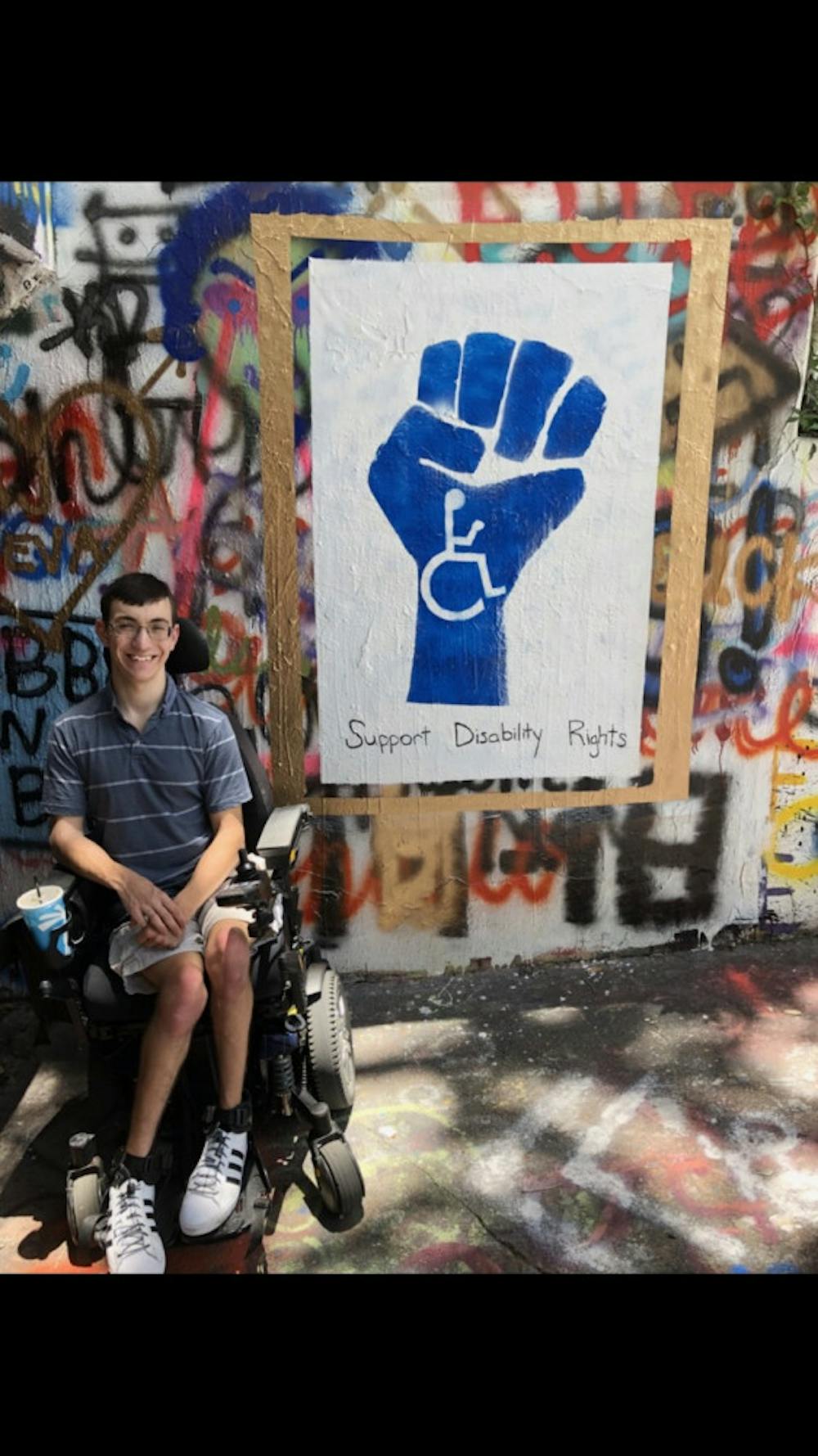It was 4:59 p.m. Only one minute until Delainia Parrish could click on her future.
Parrish knew she worked hard through four years of vigorous studying for classes and standardized tests, but she was still nervous.
As her family huddled around her, she refreshed two laptops when she clicked on an email at 5 p.m. with her acceptance to UF.
However, the future could have been different. Parrish was born with a physical disability from cerebral palsy — a neurological condition that affects movement, muscle tone and motor skills — but she said there was a 50 percent chance she could have been born with an intellectual disability, too.
Parrish, a 20-year-old UF marketing junior, said she understands that her world is different but it has never stopped her from achieving.
“I must identify and take ownership of my own strengths and needs,” Parrish said. “I must advocate for myself every step of the way.”
Parrish is one of more than 3,000 students registered with the UF Disability Resource Center, which helps accommodate students with both physical and mental disabilities. Last year, the center proctored 11,000 exams for students who needed aids such as extra time or a separate space. Places like Cypress Hall accommodate students with all kinds of disabilities, Parrish said.
Parrish resides in one of the dorm’s 15 “smart rooms” where lights and doors are automated with the touch of a finger.
The rooms also come with a lift system and varying accommodations for accessibility based on each residing student’s needs.
Although most of UF has complied for the American with Disabilities Act, there are still improvements to be made, said Gerry Altamirano, the assistant dean and director of the UF Disability Resource Center.
Buildings such as Murphree, Fletcher and Sledd Hall still need to be renovated to better fit the needs of students with physical disabilities.
Many of UF’s buildings such as Buckman and Walker Hall were built prior to ADA compliance standards in the 1990s and have not had major renovations since the 1980s.
Buildings were constructed with the assumption that everyone shares similar characteristics in height, mobility and physicality, Altamirano said.
“Our challenge is to think inclusively as to how we can create a new way of thinking or producing something that is inclusive for all people,” Altamirano said.
During his first Fall semester at UF, Bradley Minotti was on his way to a psychology club meeting in Little Hall when he realized the elevator was broken.
Minotti, a 21-year-old UF psychology junior with cerebral palsy since birth, relies on his wheelchair for mobility and couldn’t make it to the meeting on the second floor.
He said UF students are generally inclusive, physical or architectural issues can make students feel left out or limited by their disabilities.
“People will fix it if you tell them to, but people don’t always think about it,” Minotti said.
Despite his condition, Minotti said he’s lived his life to the fullest by going to football games, hanging out with his friends and exploring new places on campus and in downtown Gainesville.
He feels as if he has been able to have the same UF experience as other students.
“A lot of people think that it’s something that’s very difficult, and they see me differently for it, and they feel bad for me,” Minotti said. “But it’s always been a part of me, and it’s not something that makes me upset.”
Instead of focusing on someone having a disability, Parrish said people’s unique differences are just unique abilities.
“Each of us has a role to play in life,” Parrish said. “And marginalizing those who are different takes color out of the tapestry.”
After she graduates, Parrish said she wants to work as a consultant for major fashion programs but with a focus on inclusivity for customers with all body types.
She started her own brand called “Fearless Independence.”
She said she chose the name because everyone can relate to those words no matter the situation. Most people with unique needs she knows are unafraid to venture into the world, and they fearlessly live their lives while seeking independence, which is a highly cherished trait for Parrish.
“People with disabilities, especially women, want to be independent as much as possible in dressing every day,” Parrish said. “Needless to say, I put fearless and independence together, then sparks flew after that.”
Empowering a person through fashion allows them to view themselves in a positive light and improve their self-confidence, Parrish said.
The fashion industry bases itself on marketing to a single type of woman rather than create clothing that promotes the inclusion of unique shapes and sizes, she said.
“Living to the best of our abilities without fear of failure can take us to our dream destinations,” Parrish said. “I’m not sure where all this will lead me, but I do believe you and I can make a difference in the world if we try.”
Contact Dana Cassidy at dcassidy@alligator.org and follow her on Twitter at @danacassidy_
Murphree Hall - Built in 1939
Fletcher Hall - Built in 1939
Sledd Hall - Built in 1929
Buckman Hall - Opened Fall 1906
Walker Hall - Built in 1927
Bradley Minotti, a 21-year-old UF psychology junior who has had cerebral palsy since birth, sitting in front of a mural located in the Norman Tunnel that reads “Support Disability Rights.”






